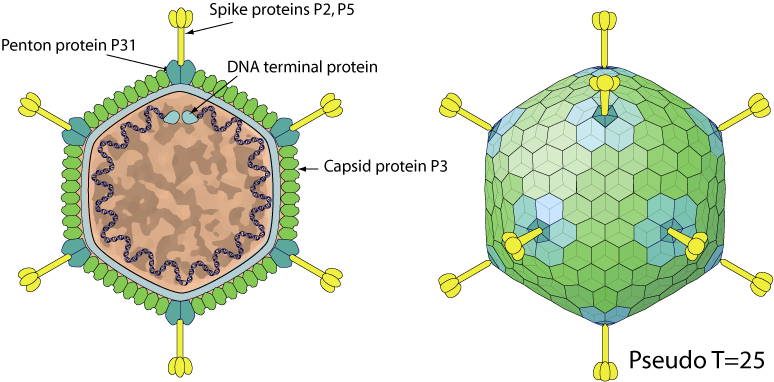VIRION

Non enveloped, icosahedral virion with a pseudo T=25 symmetry, consisting of 240 capsid proteins trimers. Virion size is about 66 nm with apical spikes of 20 nm.
The capsid encloses a inner membrane vesicle within which the genomic DNA is coiled.

GENOME
Linear, dsDNA genome of about 14.7 kb flanked by inverted repeats. Encodes for 30-32 proteins. Replication is protein-primed.
GENE EXPRESSION
Genes are transcribed by operons.
REPLICATION
CYTOPLASMIC
- Adsorption: The phage attaches to target cell adhesion receptors through its spike protein P2. As a result, a protein complex composed of P2, P5, P31 and a part of the capsid (p3) is released, which produces a hole in the capsid.
- Internal phage membrane transforms into a tubular structure that protrudes through a hole in the capsid and penetrates the host outer membrane and peptidoglycan layer. This membrane tube then fuses with host plasma membrane, releasing the viral DNA into the cytoplasm.
- Transcription and translation of early genes.
- Replication of genomic DNA.
- Transcription and translation of late genes.
- Capsid proteins polymerize around a lipoprotein vesicle translocated in the cytoplasm by virion assembly factors.
- Genomic DNA is packaged in new virions.
- Mature virions are released from the cell by lysis.

